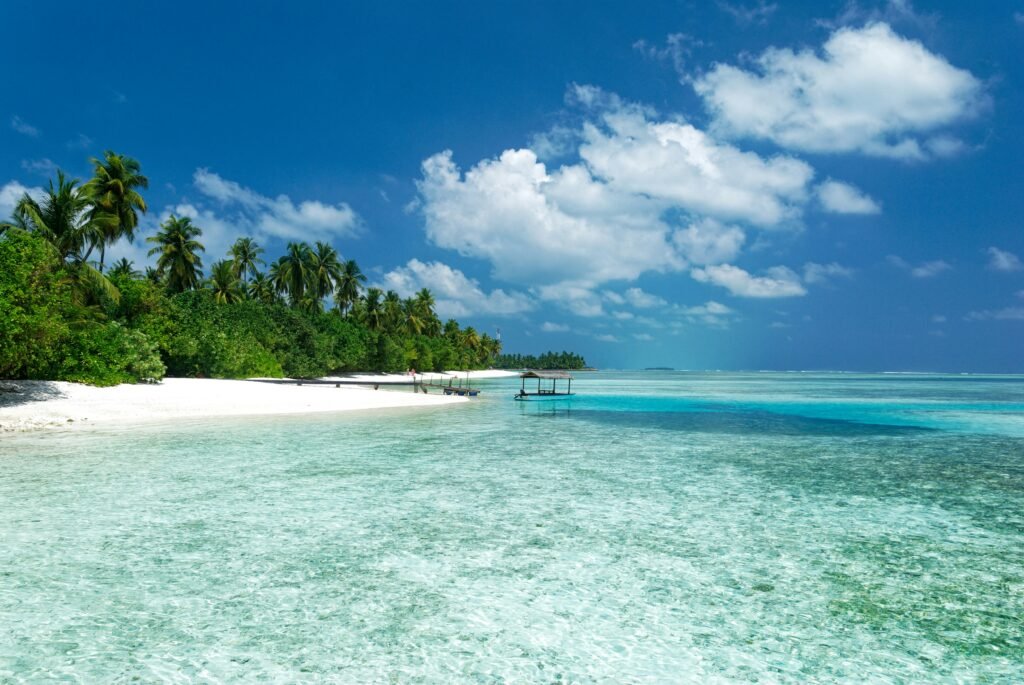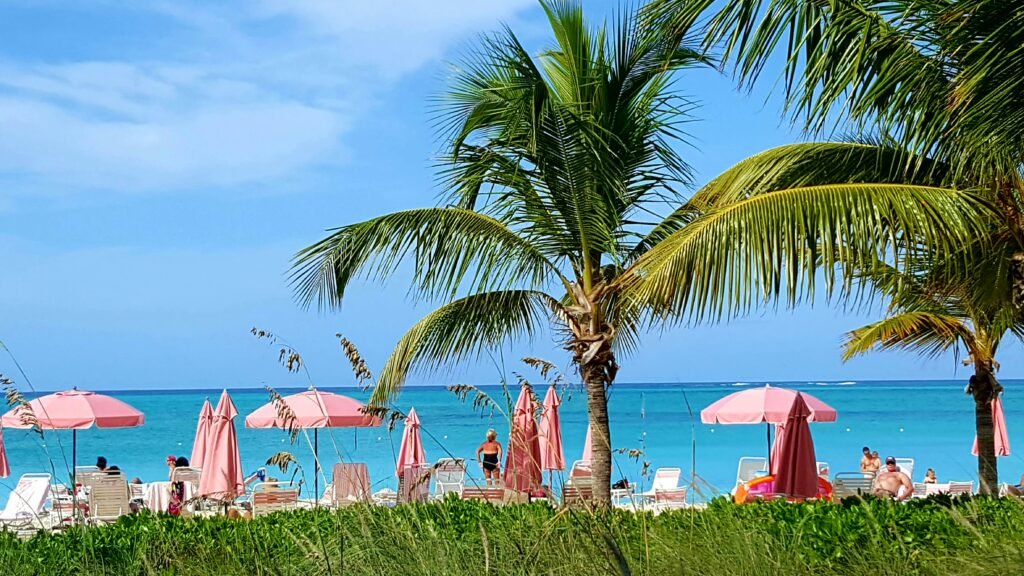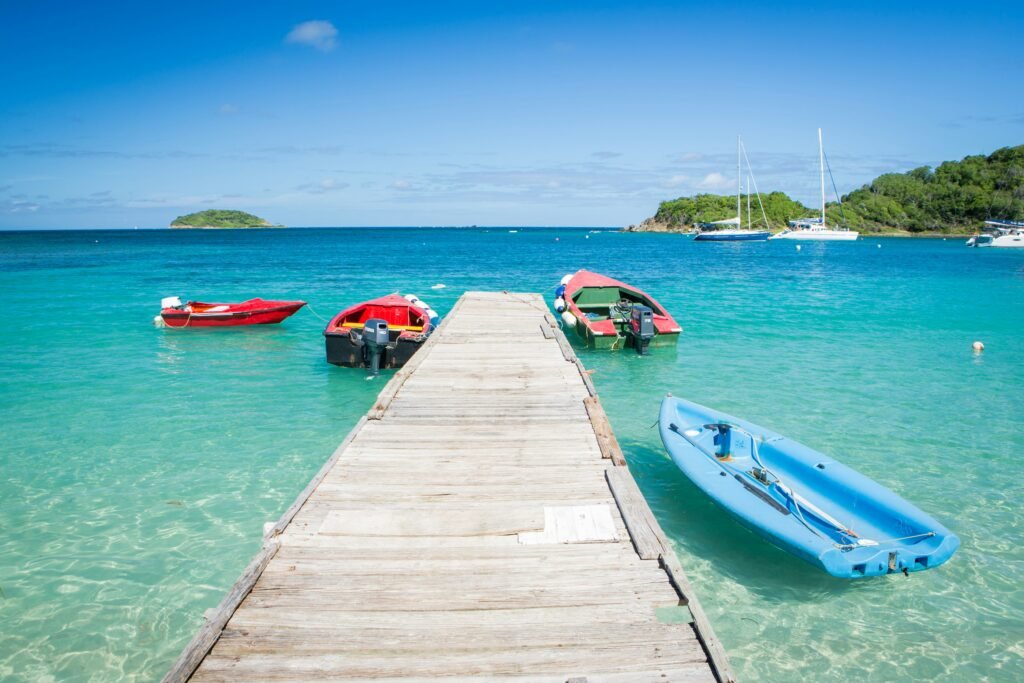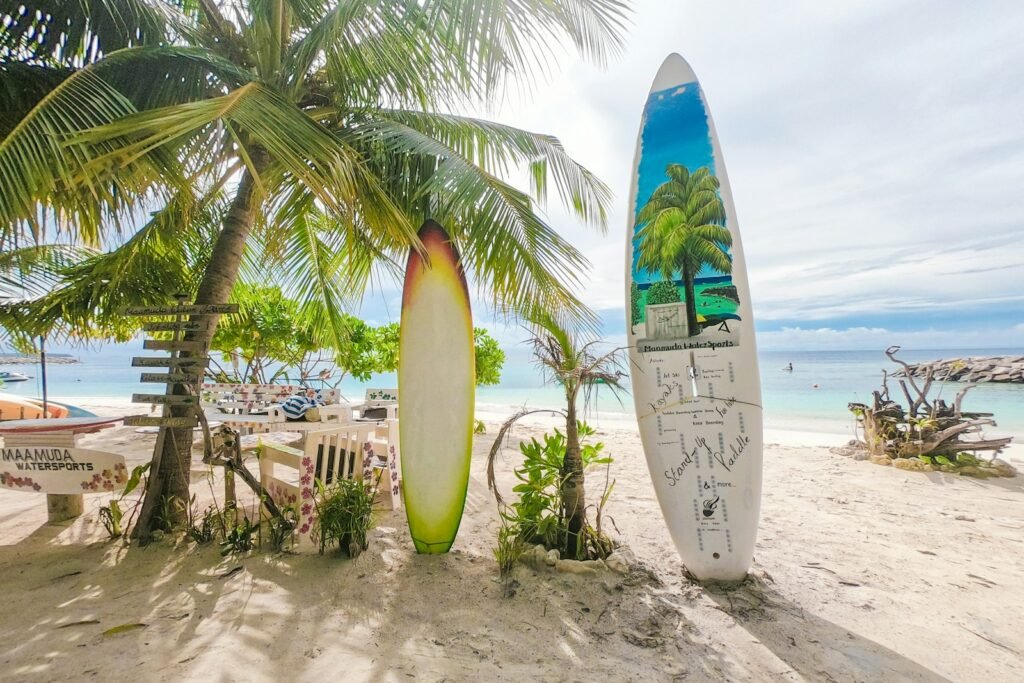Imagine visiting Turks and Caicos when the weather is perfect, prices are low, and sunsets are long. Would you change your travel plans?
Choosing the right time to visit Turks and Caicos is key. You want dry skies, quiet beaches, or affordable prices. This Caribbean archipelago offers warmth, beautiful beaches, and clear waters all year.
If you’re planning a trip and want more than just the best travel months—like how to find vacation deals, where to stay, and family-friendly tips—check out my full Turks and Caicos Vacation Packages Travel Guide.
From December to April, you get the driest and sunniest weather. It’s also the busiest time, with higher prices. But, if you’re looking for fewer crowds and good deals, May and November are better. These months offer fewer people and great value.
June to October is the low season, with lower prices and calm seas. It’s also hurricane season, but you can find cultural festivals and enjoy the beach. Some places might close for renovations, so plan ahead.
Use this guide to find the best time to visit Turks and Caicos. Whether you want perfect weather or a quiet beach, you can find it here.

Travel freely knowing you’re covered wherever you go. SafetyWing gives you affordable global travel and medical insurance that protects you from unexpected costs — so you can explore the world with total peace of mind.
Travel Tips at a Glance
- High season (December–April) = driest skies, peak vibes, highest prices.
- May and November offer fewer crowds, quick showers, and great reef visibility.
- June–October brings the lowest rates, calm seas, and a hurricane-season caveat.
- Expect 75–95°F air and 79–85°F ocean temps year-round—beach time is a given.
- Whale watching shines from late December to early March near Grand Turk and Salt Cay.
- Families find mellow spring breaks and easy-swim beaches like Grace Bay and Leeward Beach.
- Book early for holidays; consider flexible plans in late summer and early fall.
Why Timing Matters for Turks & Caicos: Weather, Crowds, and Costs
You want easy beach days, clear water, and prices that make sense for your family. Timing is key. The best time to visit Turks and Caicos depends on sun, wind, and your budget. Knowing the rainy and hurricane seasons helps you plan better.
Turks & Caicos travel seasons at a glance
Here’s a quick look: High season (December–April) has the driest weather and most sun. But, it also means peak rates and tight availability. Shoulder months (May and November) offer lighter crowds, short showers, and strong value. Low season (June–October) has the best deals, warmer temps, and some closures to note as you weigh hurricane season risks.
- High season = book early for lodging, tours, and dive charters (rates can rise 30–50%).
- Shoulder months = great balance of price and comfort for families.
- Low season = biggest savings, but check hours ahead and plan flexibly.
For an at-a-glance calendar of temperatures and crowds, see this helpful guide to the best time to visit Turks and.
How weather patterns affect your beach days and water sports
From January to April, winds are mild and rain is lowest—perfect for kids’ beach time and long swims. In the rainy season (August–December), showers are brief with bright sun on both sides. May can see a small bump in rain, but the beach is inviting.
Winter brings breezier seas, which kiteboarders love. Summer seas lie flat, making snorkeling, diving, kayaking, and paddleboarding shine. Whale watching is best from late December to early March, so plan those boat days early in your stay.
Price swings from high season to the off season
Prices peak in winter when rooms and villas sell fast. In late August through October and early November, you’ll find the lowest accommodation rates and frequent free-night promos. Everyday costs like groceries and restaurants stay fairly steady year-round.
If you’re booking during hurricane season, protect your savings with flexible flights and travel insurance. This way, you keep the value without the stress. The best time for deals often overlaps with the rainy season, so smart planning pays off.
High Season: December to April for Perfect Weather and Peak Experiences
Looking for sunny days and warm waters? December to April is your best bet. The weather is dry and sunny, making it ideal for beach fun. Daytime temperatures are around 81–84°F, and the ocean is a refreshing 79–81°F.
Expect plenty of sunshine and gentle breezes. These are great for water sports like sailing and kiteboarding. Swimmers will find calm spots at Grace Bay and Leeward Beach.
Sunniest months and dry season advantages
These months have the least rain and clearest skies. It’s perfect for snorkeling and diving. Whether you choose January or February, both months are great for family activities.
- Plan mornings for glassy seas (great for little swimmers!).
- Book reef trips on early-week days to dodge weekend crowds.
- Pack light layers; evening breezes feel cool after sunset.
Turks and Caicos in December: holidays, festivities, and advance booking
December is a magical time in Turks and Caicos. Enjoy fireworks, festive dinners, and events. Late December is less rainy, but book early to avoid high prices.
- Target family suites near Grace Bay for easy stroller-friendly walks.
- Pre-book kid-safe reef tours with operators on Providenciales.
- Secure dinner spots for holiday nights (menus fill fast!).
Whale watching window from late December to early March
Humpback whales migrate through the islands from late December to early March. February is the best time for clear seas and whale sightings. Choose family-friendly boats for an unforgettable experience.
- Consider a morning departure for calmer water.
- Bring polarized sunglasses and reef-safe sunscreen.
- Prepare kids for a respectful, no-touch wildlife policy.
Events and culture: Easter celebrations and spring vibes
Spring brings beach picnics, kite-flying, and community events. March offers a festive atmosphere without the crowds. Easter adds cultural fun, keeping things relaxed.
- Join local kite days on open beaches (bring a compact travel kite!).
- Visit the reef after lunch when sun angles boost visibility.
- Wrap afternoons with sunset walks along Leeward Beach—easy, safe, and stunning.
Family tip: Watch wind forecasts. Breezy afternoons are best for sailing, while mornings are great for snorkeling.
Shoulder Seasons: May and November for Value and Fewer Crowds
Looking for warm water and fewer people? May and November are perfect for families. Enjoy highs of 84–86°F and ocean temps around 81–82°F. Plus, rates are lower than in winter, making it great for planning around school.
Quick tip: May and November are the best for value and calm beaches. They offer a bonus before and after the busy season.
Why May and November are a sweet spot
May has long days and plenty of sunshine. November brings gentle winter breezes without the cold. You’ll find easier bookings at family resorts and more space on Grace Bay for walks.
Lower demand means better deals on flights and villas. This is perfect for families booking for four or more. It’s a practical choice for those looking for a balance of price and comfort.
Short, refreshing showers and great visibility for snorkeling and diving
Showers in May are short and sweet, perfect for a break under an umbrella. In November, the breeze keeps things cool between swims.
Underwater, you’ll see fewer fins and clearer views. The Princess Alexandra National Park and the Grand Turk wall are great for beginners.
Conch Festival in November and late-fall deals
Visit in November for the Turks & Caicos Conch Festival in Blue Hills. Enjoy conch dishes, live music, and games for kids. Don’t miss Museum Day on Grand Turk for interactive learning.
Late October to early November offers great rates before the high season. Both May and November are excellent for savings and space. You can choose the best month for your family’s needs.
Low Season: June to October for Deals, Calm Seas, and Local Life
The islands slow down in the off season, and locals take over. You’ll find warm waters, calm bays, and plenty of space. It’s perfect for family adventures on your own terms.

Turks and Caicos off season benefits for budget travelers
From early summer to fall, prices drop and deals abound. You can find free nights and kids-stay-free offers. The turquoise waters are calm, making boating and snorkeling a breeze.
In June, expect warm air and cool ocean temperatures. This is ideal for long swims. Kayaking and reef trips are smooth and stress-free.
In July and August, it gets hotter, but the seas remain calm. Take a morning cruise to avoid the heat. Then, cool off with shade breaks and icy limeades in the afternoon.
Music and cultural festivals in July/August
Summer brings a lively vibe. Look out for the Turks & Caicos Music and Cultural Festival. There’s also the Caicos Classic Billfish Release Tournament in July and the Fools Regatta in June and July.
You’ll enjoy a relaxed atmosphere. Lines are shorter, and you can chat with locals. Evenings are filled with live music and local food.
What stays open, what may close, and how to plan
September is the quietest month. Some places close for upgrades, but essentials usually stay open. Always check hours and book ahead for car rentals and charters.
It’s hurricane season, so be flexible. Choose flexible airfare and add cancel-for-any-reason coverage. Pack repellent and prefer breezy beachfront stays.
- Smart day plan: Hit the water at sunrise, break at noon (museum time or naps), then return for a golden-hour sail.
- Hydration hacks: Freeze water bottles overnight; stash electrolyte packets for the kids.
- Sun safety: UPF rash guards, hats, and reef-safe sunscreen keep everyone comfy.
With a few tweaks, you can enjoy the off season’s charm. Early outings, indoor options, and flexible bookings unlock the islands’ heart. You’ll save money and have a great time.
Travel freely knowing you’re covered wherever you go. SafetyWing gives you affordable global travel and medical insurance that protects you from unexpected costs — so you can explore the world with total peace of mind.
Best time to go to Turks and Caicos
You’re looking for sun, calm seas, and space for sandcastles. The best time to visit Turks and Caicos offers dry skies and gentle winds. This makes it perfect for swimming, snorkeling, and relaxing without worrying about the weather. Here are some tips to help you choose the best time based on your preferences, from budget to finding quiet spots.
Overall recommendation: December to April for weather
December to April is the best for beach days. You can expect warm weather, little rain, and gentle breezes. This makes it ideal for kids to enjoy the beach. Just remember to book early as prices tend to be higher during this time.
February–April balance of weather, prices, and availability
Late winter is a favorite for families. The weather in February is perfect, with pleasant days and warming oceans. March and April offer even more options, with fewer crowds and calm waters for activities like snorkeling.
- Why it works: Comfortable temps for kids, fewer sellouts than holiday weeks, and solid visibility on Grace Bay.
- Good to know: Dinner reservations are a good idea during spring breaks.
When to go to Turks and Caicos if you prioritize empty beaches
For fewer people, visit in May or early November. These times offer quiet beaches and good weather. Early mornings on Grace Bay and Leeward Beach are always peaceful. For the quietest spots and best deals, consider late August to October. Just be ready for storms and watch the weather.
- Arrive midweek to dodge weekend peaks.
- Hit the beach at sunrise (calmer water, cooler temps).
- Choose family-friendly coves for less wind exposure.
Weather by Month: Temperatures, Rain, and Ocean Conditions
You want beach days that feel easy, safe, and fun for kids. Here’s how the islands shift through the year so you can match your trip to calm seas, light breezes, and clear water.

Temperature ranges: 75–95°F air and 79–85°F ocean
Expect steady warmth all year. Air temperatures run about 75–95°F, with only a small swing between cooler and hotter months. The ocean holds a comfy 79–85°F, so kids can splash without shivers.
If you’re comparing the temperature in turks and caicos in january to spring, winter mornings feel a touch fresher, while turks and caicos weather in march brings warmer afternoons and plenty of sun.
Turks and Caicos weather in January through April (dry season)
January and February are dry and breezy, with cooler nights good for sleep and the ocean near its coolest—
great for swimming. The temperature in turks and caicos in january pairs well with light layers at night and rash guards for daytime rays.
Turks and caicos weather in march and April turns sunnier and slightly warmer, with calmer seas that favor young snorkelers and easy paddleboard sessions.
Rainy season trends from August to December and brief showers in May
May brings quick showers that pass fast, leaving bright beach hours. Summer builds from June into turks and caicos weather in july, when heat rises and seas often go glassy for boating and shallow reef time.
Turks and caicos weather in august sits near the yearly peak for air and ocean temps, with short tropical downpours that give way to blue skies. From September into November, showers come and go; by December, skies dry out toward the holidays.
Ocean chop, wind, and visibility: what to expect month by month
Winter’s gentle trade winds add light chop that sailors and kiteboarders love. Spring eases the breeze and keeps visibility high for reef spotting. By summer—
specifically turks and caicos weather in july and turks and caicos weather in august—water often turns calm and clear, ideal for families learning to snorkel.
Year-round, visibility stays strong. Fewer boats in shoulder months can make reefs feel quieter and safer for kids, with guides on Grace Bay and Leeward Channel ready to tailor easy entries.
Hurricane Realities: Risks, Timing, and Smart Planning
You want beach time, not stress. Here’s the clear picture: turks and caicos hurricane season runs June through November. There are calm stretches and a few higher-risk weeks. The islands sit in the tropical Atlantic, so you’ll plan around forecasts and stay flexible.
Is Turks and Caicos in the hurricane belt?
Yes—so is turks and caicos in the hurricane belt? It lies within the broader path where Atlantic systems can track. Direct landfalls are uncommon, but passing storms and heavy swells happen more often. Resorts and tour crews are trained for this, with clear protocols and quick updates.
Does Turks and Caicos get hurricanes and when?
The short answer to does turks and caicos get hurricanes is yes, but not every year. Activity increases from August to October, while June and July usually see fewer organized systems. If you want the lowest odds, winter and spring bring steadier weather and higher rates.
Turks hurricane season peak: mid-August through September
The peak of turks hurricane season is mid-August through September. Ocean heat and steering winds favor stronger storms then. If you travel in this window, watch advisories, keep plans flexible, and choose properties with backup power and solid communication.
Travel insurance, flexible tickets, and booking strategies
Protect your trip with robust coverage—ideally cancel-for-any-reason—and flexible hotel and airline policies. Major carriers like American Airlines, JetBlue, and Delta often issue waivers during storms. Set fare alerts, consider refundable rates, and monitor the National Hurricane Center in the week before you fly.
Smart prep keeps family trips smooth: pack a small emergency kit (portable charger, snacks, kids’ games), download offline maps, and confirm your resort’s generator and storm plan. With eyes on the forecast, you can enjoy turks and caicos hurricane season while staying safe and confident.
What’s the Best Month to Go Based on Your Interests?
Looking for the perfect weather, value, and fun? Use your interests to find the best month to visit Turks and Caicos. Every season offers great options, depending on what you love to do.

Families and calm vibes: February, March, April
For a calm getaway, late winter to spring is ideal. Enjoy gentle trade winds and steady sun. It’s perfect for pool days and beach time with kids.
Book early for oceanfront suites and fun activities. Places like Grace Bay and Long Bay are peaceful, even during busy times. You’ll have smooth mornings for paddling and cool evenings for walks on the sand.
Divers and snorkelers: spring clarity vs. summer’s flat seas
Spring offers clear views on the barrier reef near Providenciales and Grand Turk. You’ll see turtles, rays, and bright coral. Summer’s seas are calm, great for beginners.
For underwater adventures, choose March to May for clear waters or July for calm seas. Morning boat trips are smoothest.
Kiteboarding and wind sports: winter breezes
Winter months bring strong winds for kiteboarding, wing foiling, and windsurfing. Long Bay Beach is perfect with its wide, shallow shelf. It’s great for all skill levels.
Pack a shorty wetsuit and reef-safe sunscreen. There are professional schools ready to help during the windy season.
Festival seekers: July/August culture and November’s Conch Festival
Summer is lively with music and cultural festivals. Don’t miss the Fools Regatta and the Caicos Classic Billfish Tournament in July. Expect warm nights and family fun.
In November, the Conch Festival and Museum Day on Grand Turk are highlights. It’s a time for cooking demos and hands-on exhibits for kids. November offers a mix of culture and comfort.
Month-Specific Tips: From January Cool Breezes to October Showers
Choose the right month for your family’s activities. Whether it’s stroller naps or snorkeling, these tips help. Match the weather, crowds, and activities for a great trip.
Turks and Caicos in January and February: cool nights, whale sightings
January is great for cool evenings. Temperatures are around 81°F during the day and 79°F in the ocean. Nights can get chilly, so bring a light jacket for walks.
In February, whale watching is at its best. Salt Cay is the place to be. The sea might be a bit windy, but the water is clear for snorkeling.
Turks and Caicos weather in March and April: mild winds, great beach days
March and April are warm with gentle winds. The weather is perfect for beach days. Kids can play safely while you relax.
It’s a popular time, so book early. Easter celebrations add fun without crowding the beaches.
Turks and Caicos in June and July: hot, calm seas, great for boating
June and July are hot and calm. It’s great for paddleboarding and fishing. You can also see colorful fish on glass-bottom tours.
July is warm and calm, perfect for young swimmers. Start early to avoid the sun. Don’t forget to stay hydrated.
Turks and Caicos in August, September, October: heat, storm awareness, best rates
August to October are the hottest months. The water is clear on calm days. Be ready for storms and consider travel insurance.
Stay in the shade and use strong bug spray. September and October offer quiet beaches and lower prices. Check venue hours before you go.
Turks and Caicos in November: breezes return, events resume
November is warm with gentle winds. It’s ideal for families. The Conch Festival and Museum Day offer fun and food.
Book flights and rooms early. The holiday season is busy, so plan ahead.
Turks and Caicos in December: festive peak with ideal weather
December is warm and sunny. It’s also the start of whale watching. Expect lively events and beach fireworks.
It’s the peak season. Book activities and babysitters early. Your trip will be smooth from the start.
Crowds and Costs: How to Find Fewer People and Better Deals
You want to have room to breathe and find deals that fit your family’s budget. The best times to visit Turks and Caicos are May, early November, or late August to October. For a peaceful start, visit Grace Bay at sunrise for soft light and calm waters. Then, head to Leeward Beach by mid-morning for a quieter spot.
If you’re looking for peace even in busy times, consider villas on the south shore or Long Bay. These areas have less traffic.
Prices can rise 30–50% from December to April, which is often the best weather time. Everyday costs like groceries and snorkeling gear stay about the same. So, your biggest savings come from airfare and lodging.
Late August to October and early November offer special deals like fourth-night-free or resort credits. These can stretch your family’s budget.
Plan early for school breaks. Book winter holidays and spring weeks early, and set up fare alerts. In the low season, check which restaurants and tour operators are open. Choose flexible cancellation and compare package values.
Large vacation rentals can also save money, making them great for big families.
Spring break is family-friendly here. For the quietest March–April, avoid the big all-inclusive spots on Grace Bay and skip late-night spots. May and early November are great for toddlers or early risers. These times offer calm mornings, easier dining, and plenty of space to play.
Quick tip: Share your must-do list with your host before you arrive. Many can arrange grocery pre-stocking or baby gear rentals, saving time and taxi costs.

For the best deals, consider the shoulder weeks. If you prioritize good weather, winter is the best time to visit. But for empty beaches, late summer to fall is your best bet for space and savings.
Practical Planning: What to Pack, Mosquito Notes, and Seasonal Seafood
Plan for easy, stress-free days on the island. Whether you’re looking for the best time to visit Turks and Caicos or deciding when to go, a smart packing list is key. Follow these quick tips to pack light, stay covered, and be ready for any weather.
What to wear year-round and sun-safe swim gear
Bring T-shirts, shorts, swimsuits, and sandals. Don’t forget a light sweater for cooler evenings. Long-sleeve rash guards are great for everyone, drying fast and reducing sunscreen use.
Wide-brim hats and polarized sunglasses are also must-haves. If you forget something, Providenciales’ water-sport shops have quality rash guards. This kit works all year, including the best times to visit.
Mosquito considerations after heavy rains and breezy beach advantages
Mosquitoes are usually not a big problem, but after heavy rains, they can increase. North Caicos, Middle Caicos, Parrot Cay, and inland areas are most affected. Breezy spots like Grace Bay, Grand Turk, and Salt Cay are better.
Use strong repellent, wear long sleeves at dusk, and avoid dense areas after flooding. These steps are important all year, no matter when you visit.
Seasonal seafood: lobster, conch, and grouper rules
Lobster season is from August to March. Outside this, fresh local lobster isn’t available. Conch is closed July to October, and shell exports are restricted. Nassau grouper is closed December to February.
Order seafood responsibly and ask about what’s in season. If it’s out of season, it might be imported or not allowed. Knowing these rules helps plan meals during your visit.
- Money check: The U.S. Dollar is used, and prices can be higher than in many U.S. cities. The best time for deals is the low season (September–November, except Thanksgiving).
- Family extras: Look into packages at places like Beaches Turks & Caicos on Grace Bay. They offer waterparks, kids’ clubs, and water sports included.
So, When’s the Best Time to Visit Turks & Caicos?
For the best sunshine and beach days, December to April is the best time to visit Turks and Caicos. February to April is ideal for families, with clear skies and good deals. If you prefer quiet beaches and savings, May or early November is your best bet.
Late August to October works if you’re flexible and aware of storms. The weather is always warm, with air temperatures between 75–95°F and ocean temperatures near 79–85°F. This makes swimming a joy all year.
Winter brings breezy winds perfect for kiteboarding. Summer offers calm seas for snorkeling and boat trips. The dry season, from January to April, is the sunniest. But, brief showers occur from August to December.
Book your trip early for the high season. Use flexible tickets and travel insurance during hurricane months. Always check for any closures in September and October.
Remember to pack rash guards, reef-safe sunscreen, and hats. Also, follow local seafood seasons for lobster, conch, and grouper. Whether you’re here for whales, the Conch Festival, or calm coves, timing is key for a safe and smart trip.
If you’re deciding on the best month or time to visit Turks and Caicos, this seasonal guide will help you find the perfect week for your family.
Now that you know the best time to go, the next step is planning your stay. I put together a complete Turks and Caicos Vacation Packages Travel Guide to help you find the best deals and make your trip stress-free.
Where to Stay in Turks and Caicos – Hotels Map
FAQ’s
What is the best time to visit Turks and Caicos for great weather?
What is the best month to go to Turks and Caicos for families?
When is the shoulder season in Turks and Caicos, and why is it good?
Does Turks and Caicos get hurricanes, and when is hurricane season?
Is Turks and Caicos in the hurricane belt?
What’s the best time to travel to Turks and Caicos for empty beaches?
How does the rainy season work in Turks and Caicos?
What are typical temperatures in Turks and Caicos by air and ocean?
How are winds and ocean conditions through the year?
What is Turks and Caicos like in December?
What is Turks and Caicos like in January and February?
What is Turks and Caicos weather in March and April?
What is Turks and Caicos in June and July like?
What about Turks and Caicos in August, September, and October?
Is November a good time to go to Turks and Caicos?
How much do prices change between seasons?
Are there closures in the Turks and Caicos off season?
When is the best time for whale watching?
When are snorkeling and diving conditions best?
When is the best time to go to Turks and Caicos for wind sports?
What festivals happen in summer and fall?
What should families pack for Turks and Caicos?
Are mosquitoes a problem in Turks and Caicos?
What are the seasonal seafood rules?
What’s the best time of year to go to Turks and Caicos for value without big risks?
Any booking tips for hurricane season?
Where should I stay for fewer crowds even in high season?
What’s the best time to go to Turks and Caicos if I want the calmest seas?
Do everyday prices change much during the year?







